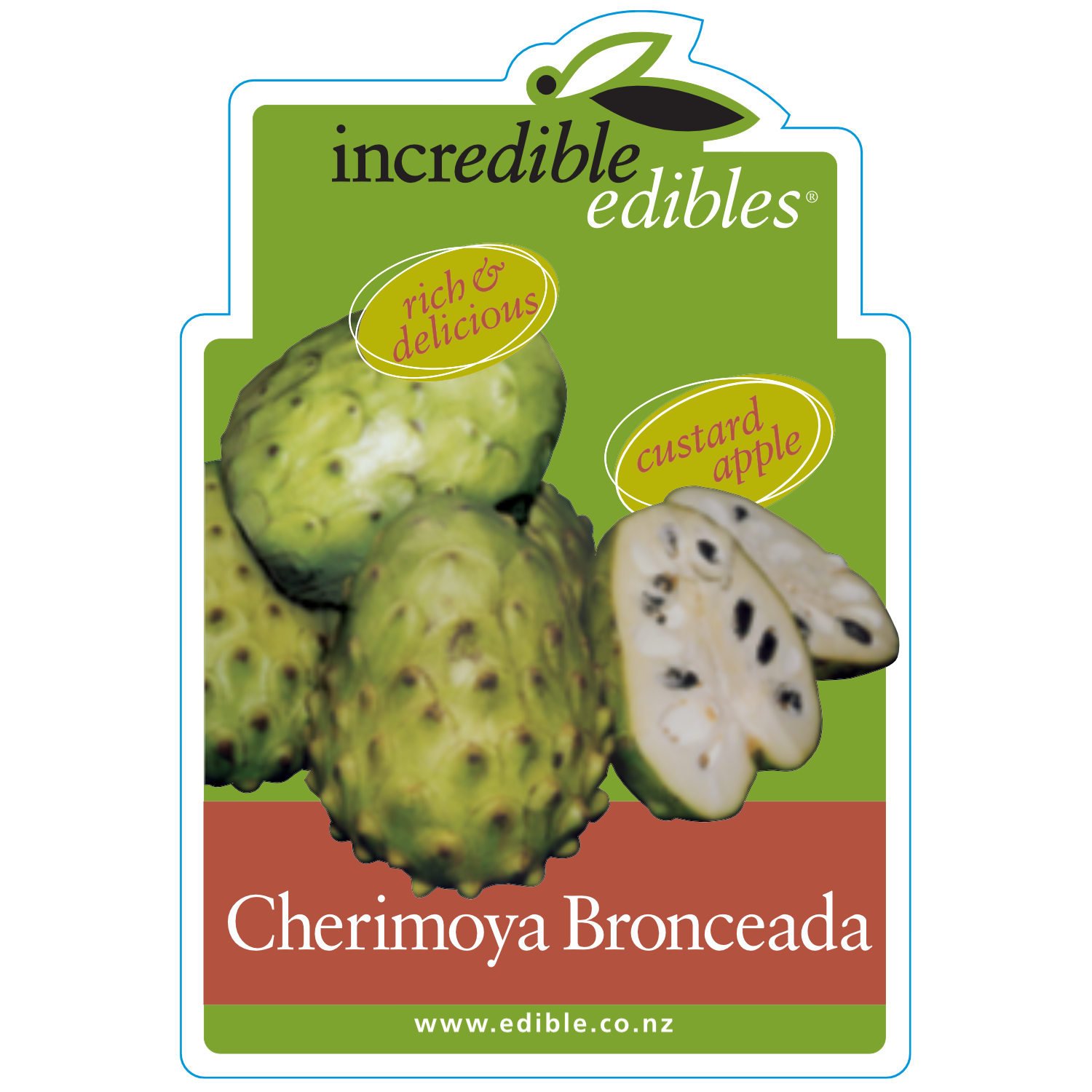 Image 1 of 2
Image 1 of 2

 Image 2 of 2
Image 2 of 2



Cherimoya Bronceada
Cherimoya Bronceada is a small upright tree approximately 5m high. The large leaves (20cm in length) are olive-green and oval. The underside of the leave is soft and velvety. The green nondescript winged flowers are fragrant, followed by large green heart-shaped knobbly fruit. Bronceada performs well in cooler climates. The creamy white juicy flesh is soft, delicate and has the taste and consistency of custard. The fruit has a delightful fruity fragrance. The flesh is smooth, with slight grittiness near the skin.
To increase fruit set, hand pollination is beneficial. Hand pollination is very simple to achieve. With a small artist paintbrush, remove the pollen and anthers (little flower stalks within the flower) from wide open flowers mid-afternoon and collect them in a small container. During the late afternoon, apply to flowers just opening by removing one petal and brushing the pollen in and around the ovary (conical shape at the base of the flower). The removed petal now marks the flower has been pollinated.
Harvest is from August to October, when the fruit turns a slightly lighter green but is still firm. Ripen fruit at room temperature and is ready to eat when it develops its fragrance and softens just a little to the touch. (Fruit should be ready 5-10 days after picking).
Prune at the end of winter to maintain shape, apply a good mulch and fertilise with a fertiliser high in potassium over spring and autumn.
Annona cherimola ‘Bronceada’
Cherimoya Bronceada is a small upright tree approximately 5m high. The large leaves (20cm in length) are olive-green and oval. The underside of the leave is soft and velvety. The green nondescript winged flowers are fragrant, followed by large green heart-shaped knobbly fruit. Bronceada performs well in cooler climates. The creamy white juicy flesh is soft, delicate and has the taste and consistency of custard. The fruit has a delightful fruity fragrance. The flesh is smooth, with slight grittiness near the skin.
To increase fruit set, hand pollination is beneficial. Hand pollination is very simple to achieve. With a small artist paintbrush, remove the pollen and anthers (little flower stalks within the flower) from wide open flowers mid-afternoon and collect them in a small container. During the late afternoon, apply to flowers just opening by removing one petal and brushing the pollen in and around the ovary (conical shape at the base of the flower). The removed petal now marks the flower has been pollinated.
Harvest is from August to October, when the fruit turns a slightly lighter green but is still firm. Ripen fruit at room temperature and is ready to eat when it develops its fragrance and softens just a little to the touch. (Fruit should be ready 5-10 days after picking).
Prune at the end of winter to maintain shape, apply a good mulch and fertilise with a fertiliser high in potassium over spring and autumn.
Annona cherimola ‘Bronceada’

